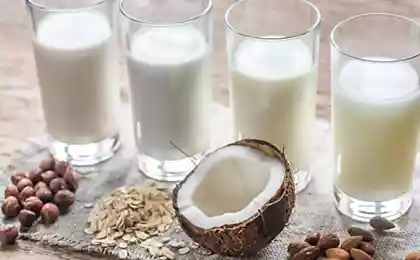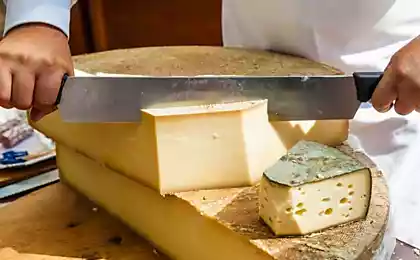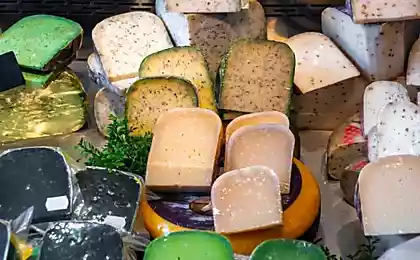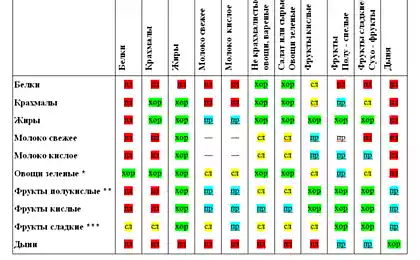202
Why the “King of Italian Cheese” is being taken off the shelves, even though it costs a lot of money
Why is Parmigiano Reggiano, as the Italians call it, the king of cheese?

There are not one, but several reasons, and we will gladly introduce them to readers. And also tell about the history of origin, technology of preparation and features of application of "Parmesan".
Exceptional utility, a multimillion army of fans, a centuries-old composition of only three components and an unforgettable symphony of taste are all signs of Parmesan that make it the best of the best cheeses.

GettyImages Let's start with the lineup. The real "Parmesan" consists of only 3 ingredients: cow's milk, salt and rennet enzyme. But it can boast a rich content of nutrients.
Hard cheeses are considered one of the most valuable sources of calcium. And the palm of primacy in the content of the useful element, as befits the king, holds Parmigiano Reggiano.
100 grams of Parmesan contains 1,100 mg of calcium, which is 15 times more than cottage cheese! The leader is the king of cheese and protein content. A hundred-gram piece of it is about 35 grams, which is more than half the daily norm.
In addition, thanks to long exposure, Parmesan is easily digested. And due to the low moisture content, it can be stored much longer than other cheeses.
It is believed that the original recipe was invented more than 800 years ago by Italian Benedictine monks. And they did it at once in two cities - Parma and Reggio Emilia. Subsequently, the manufacturers agreed to standardize the process and the cheese was called Parmigiano Reggiano.

Since then, the famous creation of Parma cheesemakers is called only so. Any cheese made outside northern Italy is banned from being called Parmesan. Even if the cow was fed milk from another locality, the real Parmigiano Reggiano will not work.

The manufacturing technology and formulation of Parmesan have remained virtually unchanged since the Middle Ages. To create the famous cheese take the milk of evening and morning milk. The mixture is heated in huge copper boilers and added rennet enzyme. It turns out cottage cheese, which is transferred to the fabric and placed in serum.

GettyImages The clot is then cut into two parts and placed in wooden molds. They are regularly turned over to remove excess serum. On the fourth day, the heads are transferred to vats with salt water. From it, the cheese should absorb the amount of salt necessary for long-term storage.
Next, Parmesan must spend at least a year in a special storage facility. Year-old cheese has a grainy structure and a sweet taste. After two years, the taste becomes thinner and the sweetness goes away. After three years, parmesan acquires a nutty aroma and becomes saltier.
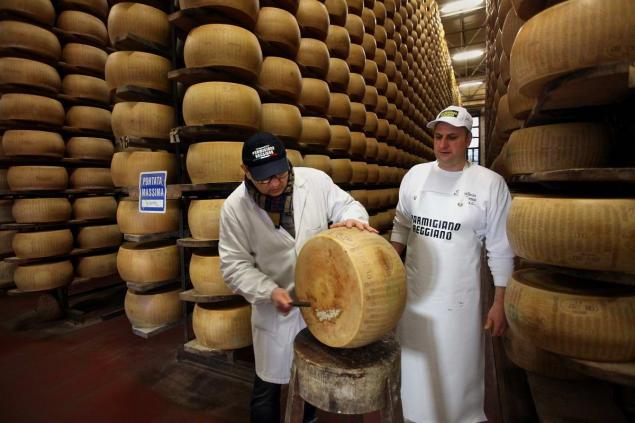
GettyImages Every 10 days the cheese is wiped and turned. And the work is not easy, as one head weighs 40 kilograms. The readiness of Parmesan is checked by tapping the cheese head with a silver hammer.
908469.
GettyImages Cheese that has passed all the checks, apply a special stencil, protected from counterfeiting. If there are no such points on the skin of your cheese, then you are most likely a craft.
How is Parmesan? Without parmesan, it is difficult to imagine the classic pasta "Bolognese" and Italian pizza, various sauces, salads, soups and stews.

But in each case, the way it is used depends on the age of the cheese. Young (from 12 to 18 months) is consumed independently as part of cheese cutting. Mature (from 18 to 24 months) is good in the composition of hot dishes and when baking meat and fish. Old (more than 24 months) is usually used in grated form for pasta and seafood.
The winner of the TV show “MasterChef-5” and the author of books about food Evgeny Klopotenko considers parmesan a universal ingredient that can fabulously transform the taste of the most ordinary dish.
“In fact, parmesan is more of a spice than cheese. It enhances the taste of everything it touches. And Parmesan is combined with absolutely everything. So in any incomprehensible situation, add parmesan to food, advises Klopotenko.
He is sure that the additional costs pay off more than once: “If you just close Parmesan, your receptors for twenty minutes will be at the mercy of the aftertaste.”

© Phere Eugene suggests adding parmesan to baked vegetables, cream soups and any porridge. Even everyday buckwheat with grated parmesan and tomatoes roasted in herbs, according to him, becomes a real delicacy.
How much does the King cost? In Italy, the price of Parmigiano Reggiano depends on its age. The cost of cheese aged 18 months starts from 18 euros per kilogram. A 36-month exposure will cost 5 euros more. More interesting offers can be found at the fairs.
Unfortunately, for a number of reasons, it is quite difficult to buy a real Parmesan in Russia today. But on the shelves you can find cheese of Russian, Latvian, Moldovan production with the same name. The cost of such a product is in the range of 1000-2000 rubles per kilogram.
What should I say in conclusion? If you find yourself in Italy, do not forget to stock up on the king of cheeses to fully enjoy its noble taste. Bon appetit and a long aftertaste!

There are not one, but several reasons, and we will gladly introduce them to readers. And also tell about the history of origin, technology of preparation and features of application of "Parmesan".
Exceptional utility, a multimillion army of fans, a centuries-old composition of only three components and an unforgettable symphony of taste are all signs of Parmesan that make it the best of the best cheeses.

GettyImages Let's start with the lineup. The real "Parmesan" consists of only 3 ingredients: cow's milk, salt and rennet enzyme. But it can boast a rich content of nutrients.
Hard cheeses are considered one of the most valuable sources of calcium. And the palm of primacy in the content of the useful element, as befits the king, holds Parmigiano Reggiano.
100 grams of Parmesan contains 1,100 mg of calcium, which is 15 times more than cottage cheese! The leader is the king of cheese and protein content. A hundred-gram piece of it is about 35 grams, which is more than half the daily norm.
In addition, thanks to long exposure, Parmesan is easily digested. And due to the low moisture content, it can be stored much longer than other cheeses.
It is believed that the original recipe was invented more than 800 years ago by Italian Benedictine monks. And they did it at once in two cities - Parma and Reggio Emilia. Subsequently, the manufacturers agreed to standardize the process and the cheese was called Parmigiano Reggiano.

Since then, the famous creation of Parma cheesemakers is called only so. Any cheese made outside northern Italy is banned from being called Parmesan. Even if the cow was fed milk from another locality, the real Parmigiano Reggiano will not work.

The manufacturing technology and formulation of Parmesan have remained virtually unchanged since the Middle Ages. To create the famous cheese take the milk of evening and morning milk. The mixture is heated in huge copper boilers and added rennet enzyme. It turns out cottage cheese, which is transferred to the fabric and placed in serum.

GettyImages The clot is then cut into two parts and placed in wooden molds. They are regularly turned over to remove excess serum. On the fourth day, the heads are transferred to vats with salt water. From it, the cheese should absorb the amount of salt necessary for long-term storage.
Next, Parmesan must spend at least a year in a special storage facility. Year-old cheese has a grainy structure and a sweet taste. After two years, the taste becomes thinner and the sweetness goes away. After three years, parmesan acquires a nutty aroma and becomes saltier.

GettyImages Every 10 days the cheese is wiped and turned. And the work is not easy, as one head weighs 40 kilograms. The readiness of Parmesan is checked by tapping the cheese head with a silver hammer.
908469.
GettyImages Cheese that has passed all the checks, apply a special stencil, protected from counterfeiting. If there are no such points on the skin of your cheese, then you are most likely a craft.
How is Parmesan? Without parmesan, it is difficult to imagine the classic pasta "Bolognese" and Italian pizza, various sauces, salads, soups and stews.

But in each case, the way it is used depends on the age of the cheese. Young (from 12 to 18 months) is consumed independently as part of cheese cutting. Mature (from 18 to 24 months) is good in the composition of hot dishes and when baking meat and fish. Old (more than 24 months) is usually used in grated form for pasta and seafood.
The winner of the TV show “MasterChef-5” and the author of books about food Evgeny Klopotenko considers parmesan a universal ingredient that can fabulously transform the taste of the most ordinary dish.
“In fact, parmesan is more of a spice than cheese. It enhances the taste of everything it touches. And Parmesan is combined with absolutely everything. So in any incomprehensible situation, add parmesan to food, advises Klopotenko.
He is sure that the additional costs pay off more than once: “If you just close Parmesan, your receptors for twenty minutes will be at the mercy of the aftertaste.”

© Phere Eugene suggests adding parmesan to baked vegetables, cream soups and any porridge. Even everyday buckwheat with grated parmesan and tomatoes roasted in herbs, according to him, becomes a real delicacy.
How much does the King cost? In Italy, the price of Parmigiano Reggiano depends on its age. The cost of cheese aged 18 months starts from 18 euros per kilogram. A 36-month exposure will cost 5 euros more. More interesting offers can be found at the fairs.
Unfortunately, for a number of reasons, it is quite difficult to buy a real Parmesan in Russia today. But on the shelves you can find cheese of Russian, Latvian, Moldovan production with the same name. The cost of such a product is in the range of 1000-2000 rubles per kilogram.
What should I say in conclusion? If you find yourself in Italy, do not forget to stock up on the king of cheeses to fully enjoy its noble taste. Bon appetit and a long aftertaste!
Simple coffee problem to remember math teacher with gratitude
Who doesn’t want the pandemic to end soon?

